Best guitar picks 2025: My favorite plectrums for speed, grip, and articulation in your guitar playing
Find the perfect fit with my selection of guitar picks for electric, bass, and acoustic guitars
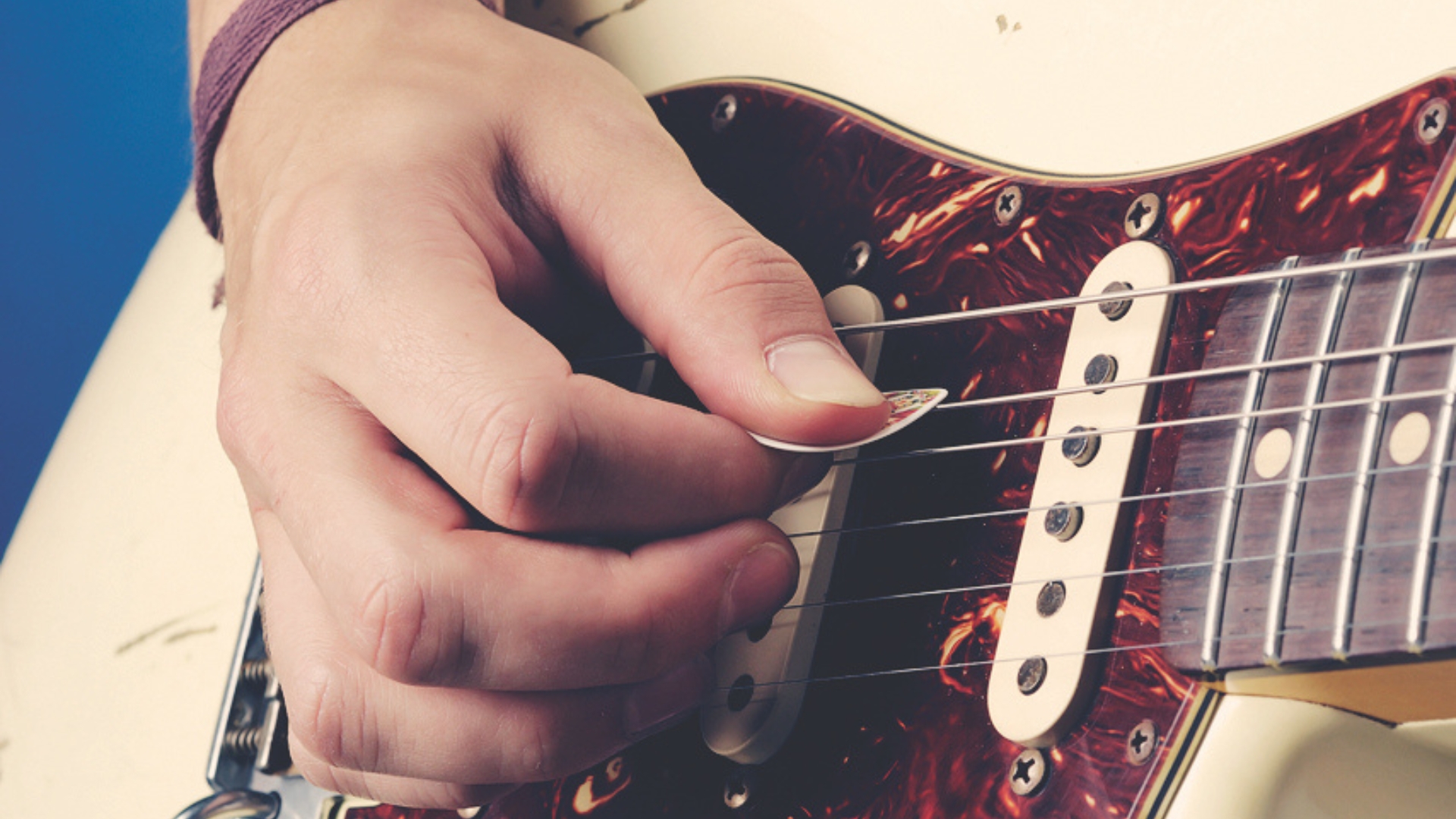
I have always believed that finding the best guitar picks (or plectrums, to use their formal name) for your taste is one of the easiest and most cost-effective ways to get an instant improvement in your playing. It may seem like a small thing but different guitar pick materials can produce a variety of tones, and a pick is essential for expressing yourself properly on the guitar.
There was a time when any old pick used to do the job for me. Whether it was a cut-up old bank card, an ancient Iron Maiden-branded pick worn to a stub, or even a coin if I got desperate, I would use whatever was lying around. It was only when I began giving some real thought to this small but important tool that I noticed my playing becoming more consistent, more expressive, and much more fluid. I started to notice that Delrin picks have a lot more attack and snap than nylon plectrums, that the thickness really affected how I played, and even that the shape had an effect on the speed of my playing.
A pick is a very personal thing, and after more than two decades of playing, I have tried just about everything there is to try. From Dunlop, Fender, Ibanez, and Ernie Ball, in every imaginable size, grip, material, and gauge, finding the right one often takes a little trial and error. Working in a busy high street guitar shop, I have also helped countless players track down the perfect pick for their needs. If you want a brilliant all-rounder, then you can’t go wrong with the classic Dunlop Tortex, which has numerous thicknesses in easy-to-remember colors and provides a balanced playing experience for the vast majority of styles.
The numerous shapes and thicknesses of guitar picks will suit different playing styles, and I’ve unpacked this in various sections throughout the guide, such as a comprehensive FAQs section which tackles loads of common questions. I’ve also curated a how to choose section for complete beginners based on a decade of retail experience, and a glossary of key terms that explain pick-specific terms to help you understand the subject better.
My top picks
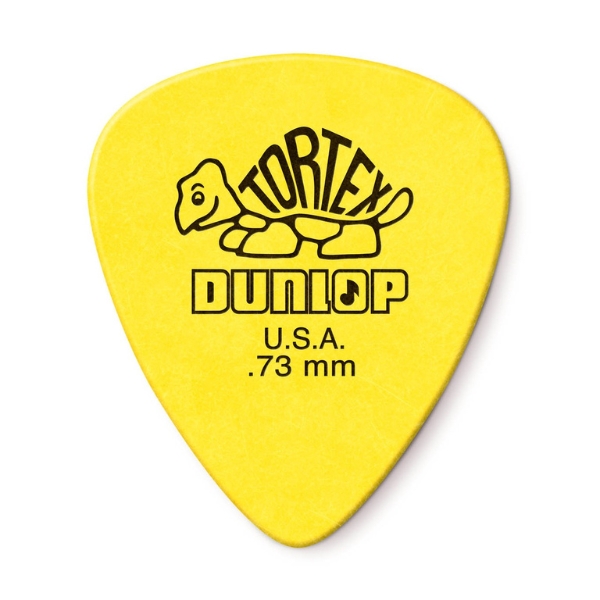
The best guitar picks will undoubtedly vary from player to player, but for me, there's no better all-rounder than the Dunlop Tortex. They’re nice and grippy, sound great, and glide over the strings easily – plus you’ve got plenty to choose from when it comes to gauges.
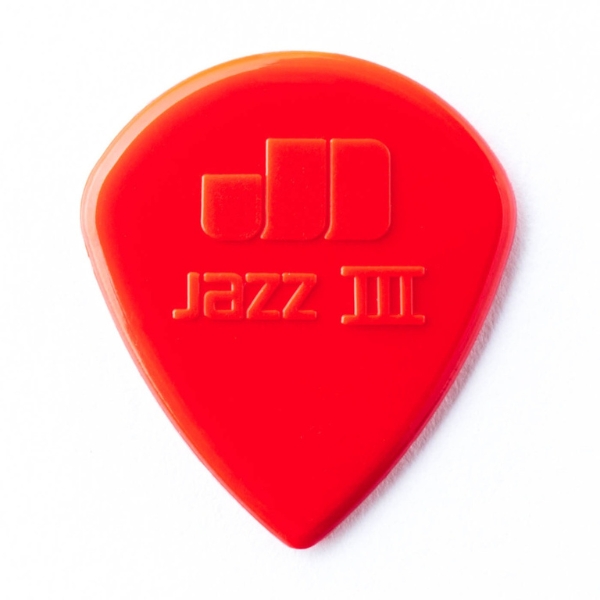
The Dunlop Jazz III is a guitar pick that's hard to ignore. It’s ubiquitous among rock, jazz, metal, and seemingly every other type of player due to its relative stiffness, refined point, and compact size, which makes it great for fast and precise playing.
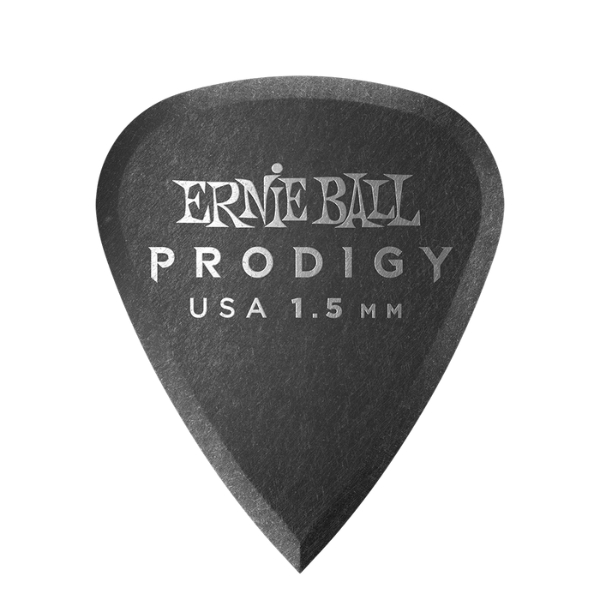
The sharp point of the Ernie Ball Prodigy makes it really great for upping your accuracy on the strings, particularly when playing fast. It takes some getting used to, but if you're string skipping, playing arpeggiated chords, or fast lead lines, it's definitely worth trying out.
Best overall
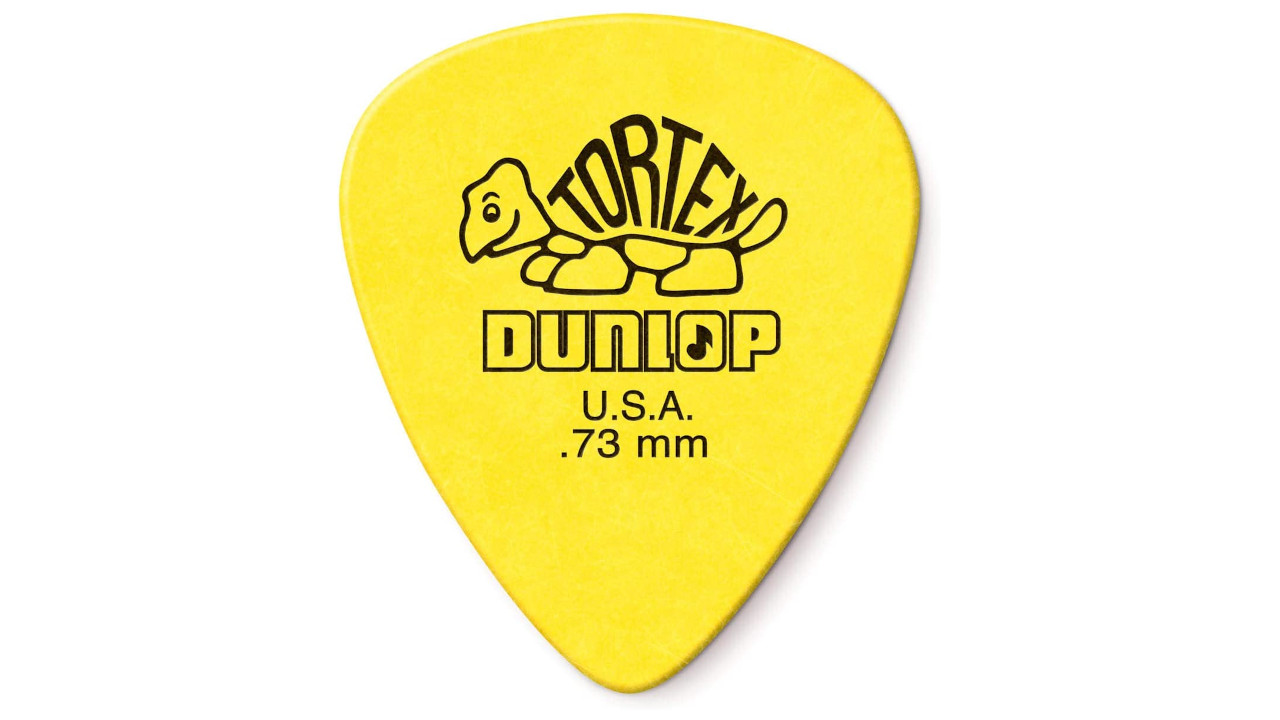
1. Dunlop Tortex Standard
Our expert review:
Specifications
Reasons to buy
Reasons to avoid
✅ Buy if you want a versatile workhorse: Perhaps the most popular pick in the world, the Tortex is suitable for countless styles and tastes.
❌ Avoid if you like a bit of flex: Although there are thin options in the range, Tortex is particularly stiff compared with other materials.
Overview: I know this might not be the flashiest choice for the number one spot, but in my experience, the Dunlop Tortex is as close as it gets to a universal standard. They are versatile, tough, and almost every guitarist I have met has played with one at some point. When a pick works for beginners, pros, and everyone in between, it earns its place at the top.
Build quality: Made from Delrin, these are durable picks that stand up well to the rigors of guitar playing. They can wear down a little over time, particularly if you have a strong and heavy playing style. However, this is not necessarily a bad thing, as a pick that does not wear down at all will wear out your guitar strings much faster.
Usability: What sets these apart from many others is their matte finish, which gives them a natural grip that other materials can only dream of. I have always found that Delrin plectrums sit on the more rigid side when comparing the same thicknesses against other materials, such as nylon. That said, the Dunlop Tortex range goes all the way down to 0.50mm, so if you appreciate a bit of flex, there is an option for you.
It is a classic shape that works comfortably for all kinds of players, whether on electric, acoustic, or even bass, and the colour-coding helps ensure you always reach for the right thickness.
Sound: As for tone, Dunlop Tortex picks have a clear, defined attack that works particularly well for electric guitar lead lines and for projecting as much volume as possible on acoustic. When factoring in durability, availability, price point, and playability, the Dunlop Tortex sits firmly at the top of the food chain.
Best for speed
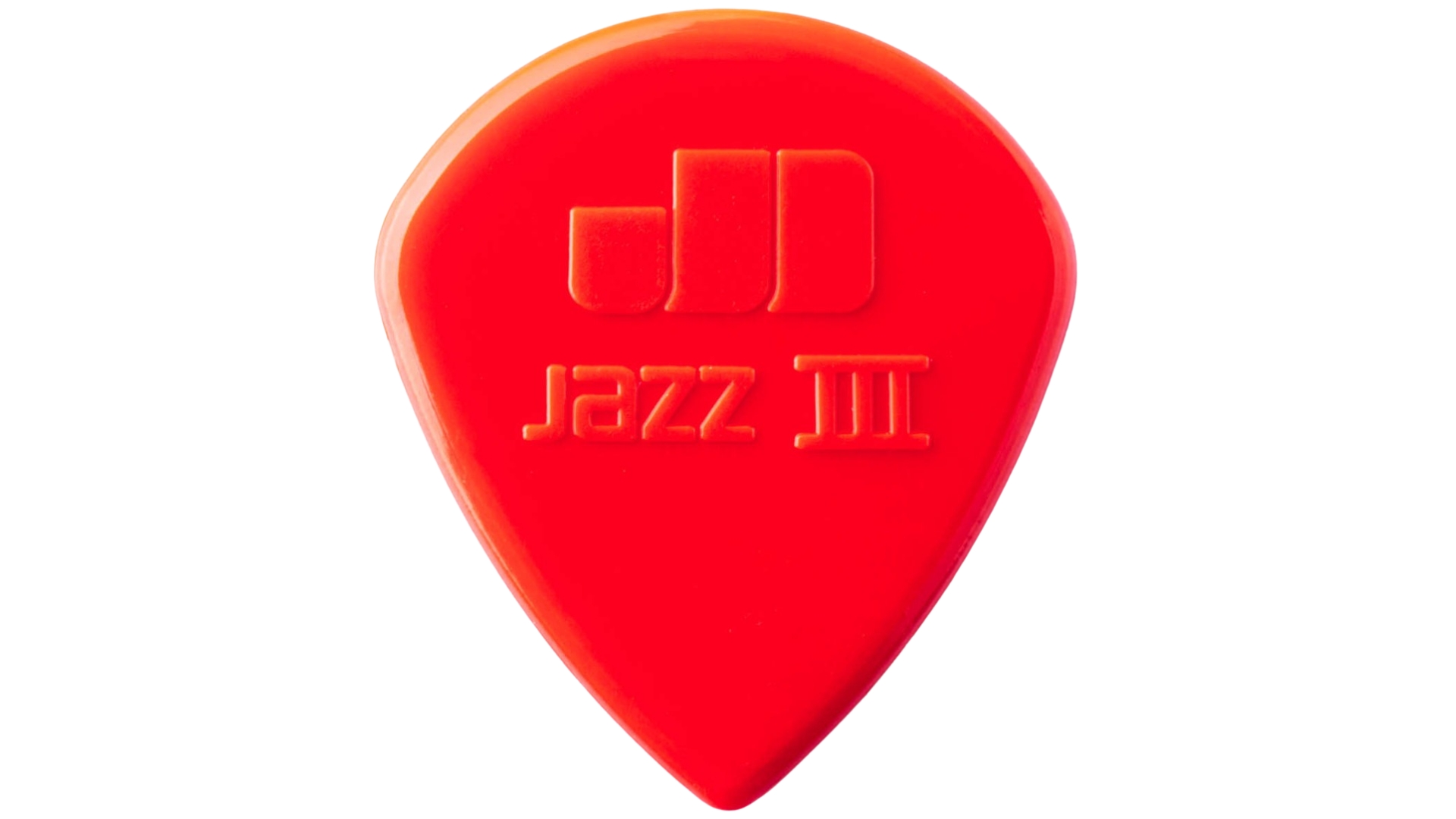
2. Dunlop Jazz III Nylon
Our expert review:
Specifications
Reasons to buy
Reasons to avoid
✅ Buy if you want to play fast. For precise lead lines, alternate picking, and speed, the Jazz III is the best choice for you.
❌ Avoid if you don't like a small pick: The Jazz III is a small pick compared to others, which some players can find results in their fingers hitting the strings while playing.
Overview: The Dunlop Nylon Jazz III is probably the most widely used pick outside of the standard shape many of us learned to play with. Favoured by a wide range of players, it has become a go-to for those who need a fast, accurate pick thanks to its relatively small, sharp profile.
Build quality: For me, two standout features define the Jazz III: the embossed logo, which provides excellent grip, and the moulded edges, which contribute to a fast, fluid playing experience. Nylon is usually considered a flexible material, but at a beefy 1.38mm thick, the Jazz III feels reassuringly solid and proves impressively durable.
Usability: The fine point makes it easy to zero in on individual strings with precision. The nylon construction allows it to glide across the strings without resistance, giving a smooth, effortless feel under the fingers. That said, the same sharp tip that makes it ideal for nimble, accurate playing might not suit everyone. If you are strumming big, open cowboy chords, such a fine point can reduce the amount of purchase you get on those sweeping motions.
Sound: Compared to Delrin, the nylon Jazz III adds a subtle warmth to your tone and a much softer attack. If you don’t get on well with the bright and immediate attack of Delrin, the Jazz III Nylon is well worth a try. It has been a favourite among players for decades, and there is no sign of that changing any time soon.
Best for accuracy
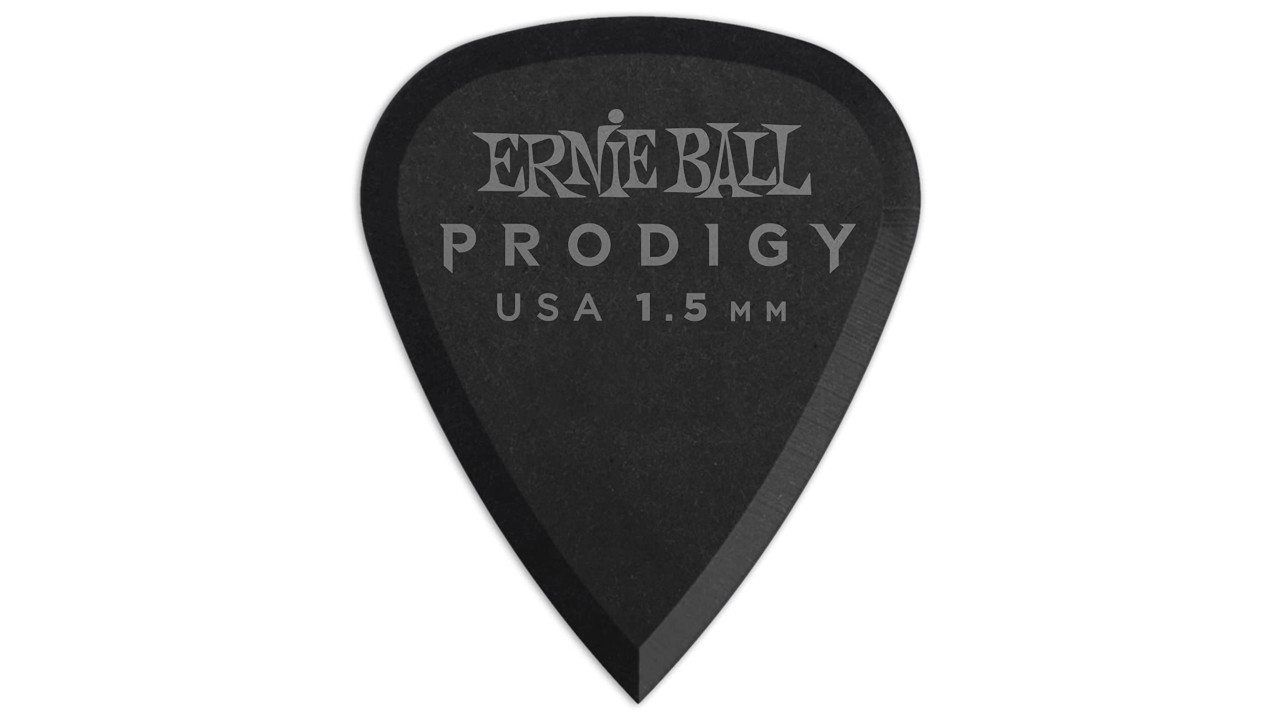
3. Ernie Ball Prodigy
Our expert review:
Specifications
Reasons to buy
Reasons to avoid
✅ Buy if you play intricate guitar lines: Players love the Prodigy as its resistance to drag and ultra-precision allows for very detailed playing.
❌ Avoid if you are after something more universal: Although it is amazing for precision playing, others may find the Prodigy uncomfortable with its incredibly pointed tip.
Overall: The incredibly fine point on the Ernie Ball Prodigy makes it one of the more radical picks in this guide, but it has quickly found its way into the hands of many players and even won over some long-time Jazz III enthusiasts.
Build quality: Made from Delrin, the Prodigy Standard plectrums are built to last. Ernie Ball’s take on this popular material is sturdy, durable, and in my experience, does not degrade easily. The slight coating adds a welcome touch of grip, which is essential for a pick designed for intricate soloing where complete control is key.
Usability/Playability: The sharp point on the Prodigy offers excellent control and accuracy, letting players – especially lead guitarists – zero in on the strings they need when playing at high speed. The beveled edges make both strumming and lead work feel smooth, with minimal drag, so the pick glides effortlessly across the strings.
There are a few shapes available, including one that comes close to the dimensions of a Jazz III, but I find the standard version strikes the perfect balance. It delivers the feel of a regular pick with the added precision of a finer point.
Sound: Tonally, the Delrin Prodigy shares similarities with the Dunlop Tortex, producing a bright, snappy response with plenty of articulation. It is an ideal choice if you want to cut through a mix, play aggressively, or add sharper dynamics that help your parts stand out.
Best for grip
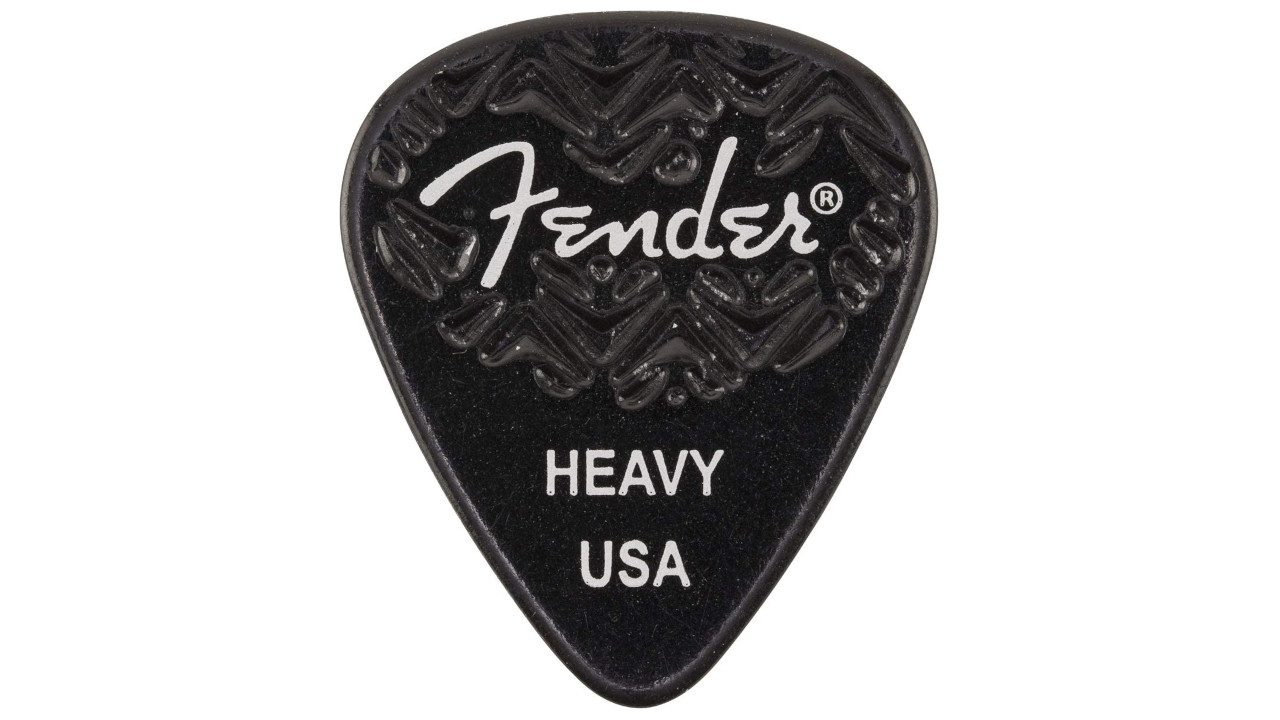
4. Fender Wavelength 351
Our expert review:
Specifications
Reasons to buy
Reasons to avoid
✅ Buy if you struggle with keeping hold of your pick: The debossed grip is fantastic at keeping this pick where it needs to be. Ideal for playing gigs if you suffer from sweaty hands.
❌ Avoid if you value technical intricacy: The rounded tip won’t go down well with players who need a sharp tip to play fast and intricate parts.
Overall: The celluloid Fender Wavelength 351 is an all-time classic. Instantly recognizable, it has been around for decades, and the shape is exactly what comes to mind when you think of a guitar pick. The twist here is that Fender has added a subtle upgrade.
Build quality: At its core, the Wavelength is a classic 351 pick with one key improvement: an embossed grip pattern on both sides. This makes it especially reliable for gigging and recording sessions, as you are far less likely to drop it. Four thickness options are available, from thin to extra heavy. The heavier gauges will suit bold strummers, while the extra-heavy version makes a strong option for bass players.
Usability/Playability: With its rounded tip, the 351 may not be the first choice for technical players who rely on razor-sharp precision and fast tremolo picking. But if you are a versatile guitarist who moves between acoustic and electric, and enjoys playing everything from rock to pop, this shape feels instantly familiar and comfortable.
Sound: Celluloid has been used for plectrums since 1922, and it remains popular for good reason. Tonally, it sits on the brighter side of the spectrum without becoming harsh, offering a balanced voice that glides smoothly across the strings.
Best for acoustic
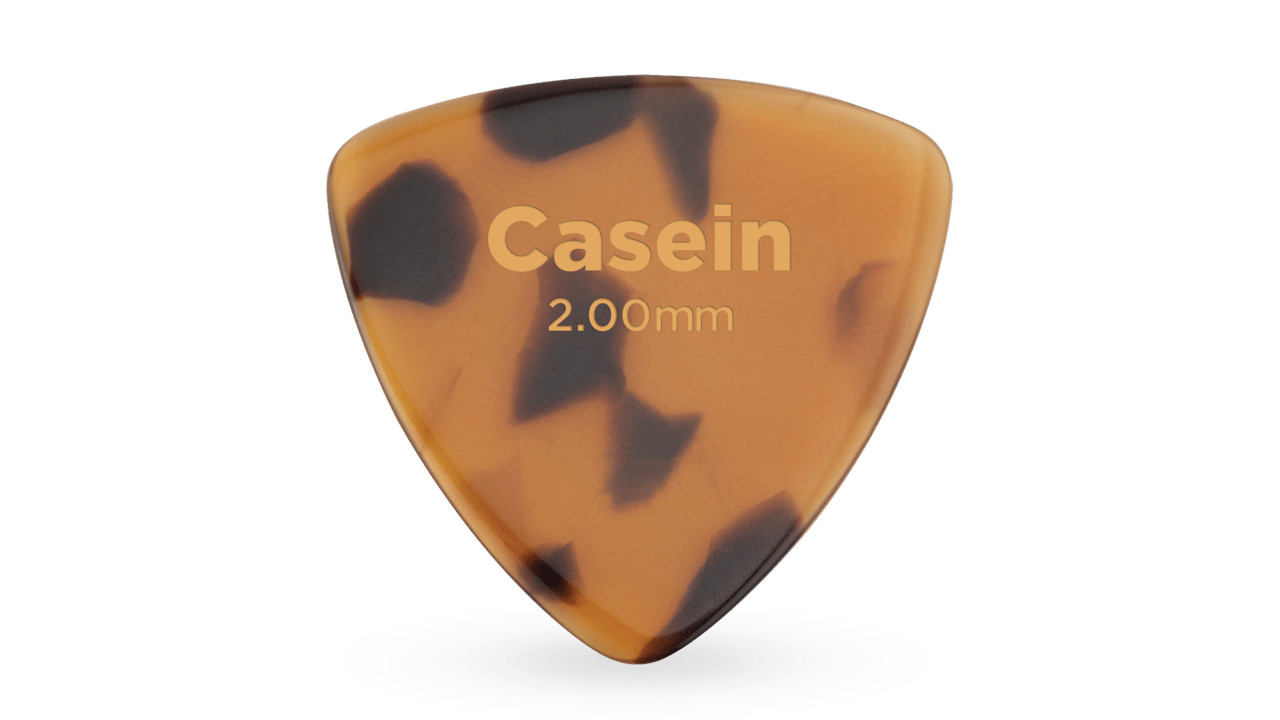
5. D’Addario Casein Wide 346
Our expert review:
Specifications
Reasons to buy
Reasons to avoid
✅ Buy if you are after a pick for acoustic guitar: The 346 is fantastic at producing warm acoustic tones, whether it be on acoustic guitar or mandolin, the Casein material does much heavy lifting.
❌ Avoid if you are an electric shredder: Warmth isn’t typically a thing shredders value, plus, the wide tip may put this style of player off.
Overview: For players who prefer a wider pick and a warmer sound, the D’Addario 346 Casein Wide could be the perfect solution. As the name suggests, it is made from casein, the closest man-made material to tortoiseshell, and it delivers a quick attack with a mellow, warm tone.
Build quality: Casein brings a few advantages over the tortoiseshell it replicates. Aside from avoiding the obvious ethical issues, casein is sturdier and more durable than natural tortoiseshell, while still retaining a similar feel under the fingers.
Usability/Playability: The 346 features a right-hand bevel that helps it glide smoothly across the strings, making it comfortable for flat-picking, strumming, or working through tricky lead passages. It is one of the best options for acoustic guitar and mandolin players, though it is equally at home in the hands of electric jazz guitarists and heavier rhythm players.
The only group who might not enjoy its size are shredders, who usually prefer something more compact and nimble. The tip is not as pointed as some on this list, but not flat either – a genuine “Goldilocks” balance.
Sound: At just under $/£30, it is not the cheapest pick, but if you are serious about your playing and want a plectrum that can genuinely shape your tone, this one is worth considering. The biggest strength of casein, much like tortoiseshell, is the warmth it brings to your sound. I particularly enjoy it for acoustic strumming, where it adds richness without the harsh snap of brighter materials. If warmth is what you are chasing, the Casein Wide 346 deserves a spot in your collection despite the price.
Best thick pick
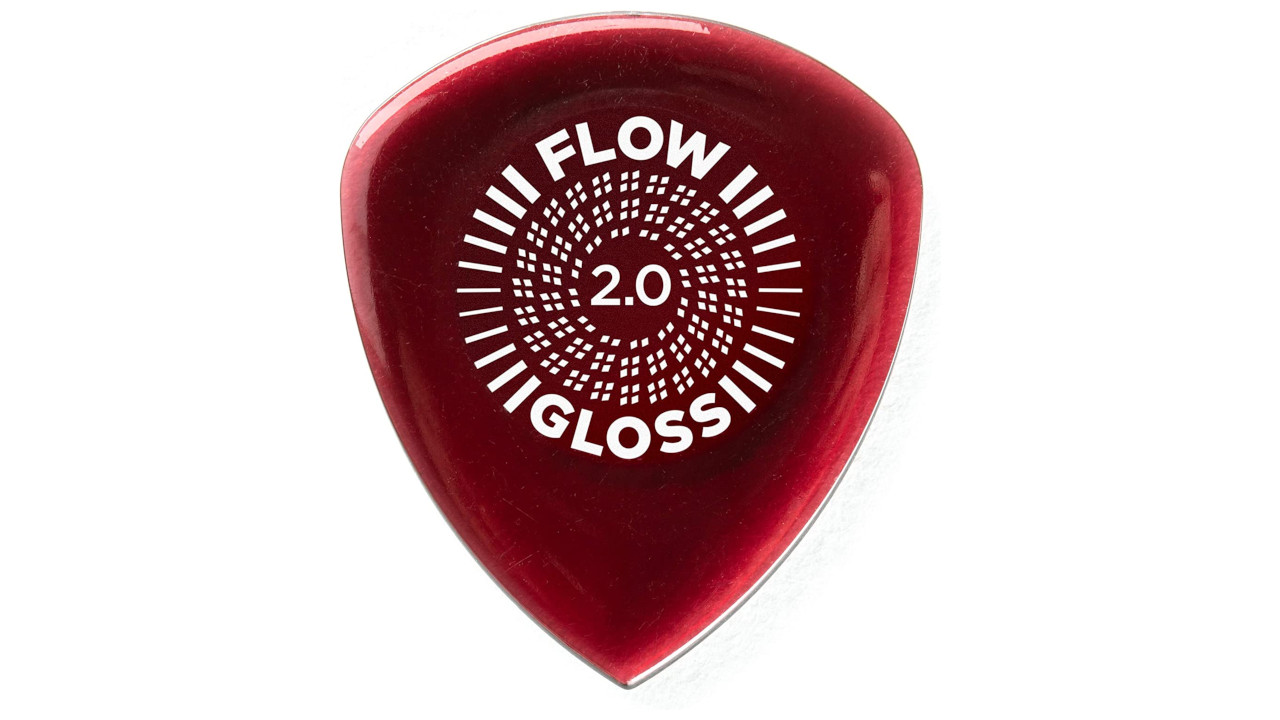
6. Dunlop Flow Gloss
Our expert review:
Specifications
Reasons to buy
Reasons to avoid
✅ Buy if you like plenty of purchase: Available in two chunky thicknesses, this is made for the player who appreciates feeling a girthy plectrum between their fingers.
❌ Avoid if you sweat a lot: Although the indentation helps, the glossy sheen can make it difficult to keep a grip.
Overview: The Dunlop Flow Gloss is designed with speed and precision in mind, and when I first tried one, I immediately understood why. With its sharp point and beveled edges, it excels at fast lead runs, yet it feels equally comfortable when holding down rhythm parts.
Build quality: Made from Ultex, the Flow Gloss is durable and dependable. The thickness gives it a solid, reassuring feel that some players will really enjoy. The glossy finish, however, might not be for everyone. If your hands sweat a lot, it can feel a little slippery, though Dunlop has added a clever indentation for your finger that helps keep the pick securely in place.
Usability: The sharp tip and bevels let me dig into the strings and release quickly, which is perfect for speed picking and precise runs. At the same time, it does not feel awkward for strumming or rhythm playing, so it remains versatile. The indentation in the body helps establish a strong connection between hand and pick, and once you get used to the gloss feel, it becomes second nature.
Sound: Tonally, Ultex brightens things up with a crisp, articulate voice and a snappy attack. Each note comes through cleanly, and the immediacy of the response makes it great for cutting through the mix. For me, the combination of durability, accuracy, and tonal clarity makes the Flow Gloss one of Dunlop’s standout picks.
Best thumb pick

7. Black Mountain Thumb Pick
Our expert review:
Specifications
Reasons to buy
Reasons to avoid
✅ Buy if you’ve struggled finding a comfortable thumb pick: The spring-loaded mechanism utilized is by far the most comfortable and universal thumb pick I have tested.
❌ Avoid if you like lots of attack: I’ve found that the nylon construction is a little soft; a material like Ultex or Derlin will be better if you prefer a snappy attack.
Overview: Fingerpickers who want more bite than their thumb alone can provide should take a look at the spring-loaded Black Mountain thumb pick. It delivers far more attack than your bare thumb and is a great tool to have in your arsenal when you want a different flavour of tone.
Build quality: Made from nylon, the Black Mountain is available in three gauges – light, medium, and heavy – so there should be an option to suit most preferences. For those who like a sharper feel, there is also a Jazz tip version that I have found ideal for quick Bluegrass-style runs.
Usability/Playability: Comfort is where this pick really shines. If you have ever used a traditional, rigid thumb pick, you will know they can cut off circulation after a while. The Black Mountain’s spring-loaded mechanism avoids this by clamping snugly yet comfortably, giving you a secure fit without the usual discomfort.
It is also a useful option for players with arthritis or anyone who struggles to close their hand around a pick. With the traditional plectrum model, you can simply slip it on your thumb and strum as you normally would.
Sound: The nylon construction produces a softer, more rounded tone that I enjoy for delicate passages. It works especially well on lighter strings, giving a sweet response. On heavier strings, it can feel a little too gentle, and in my experience, it sometimes struggles to bring out the guitar’s full tone.
Best for bright tone
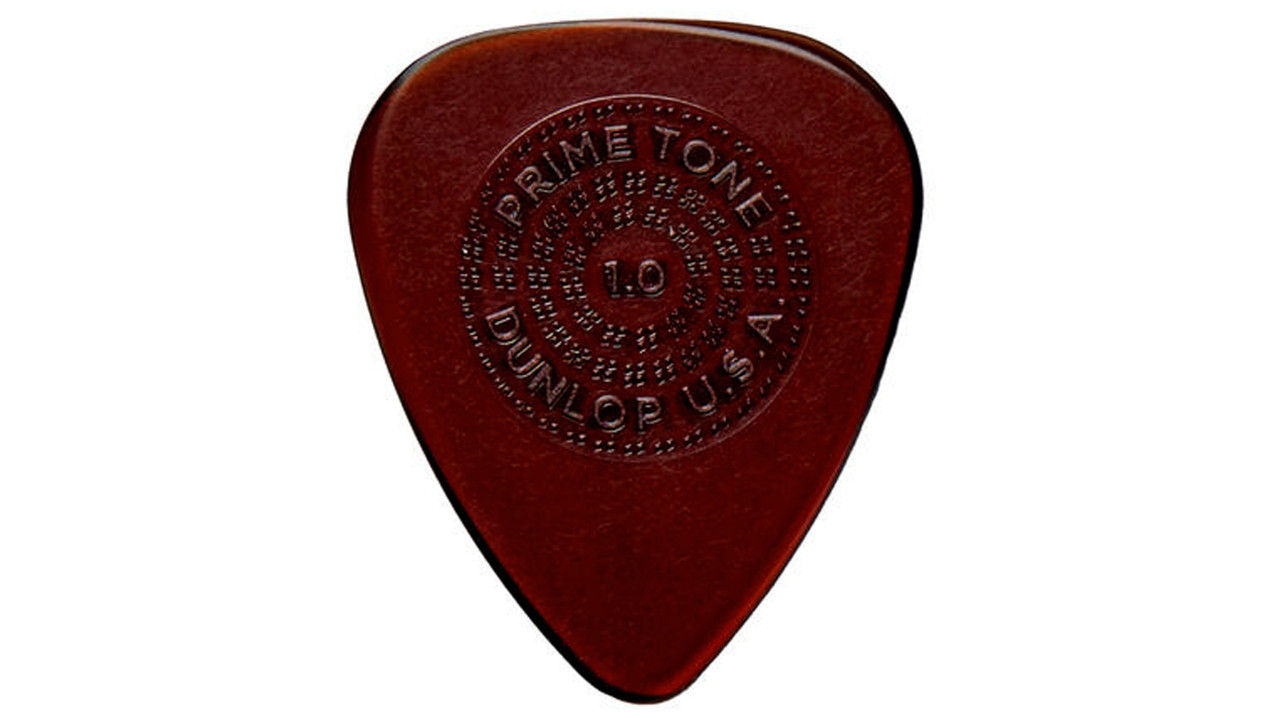
8. Taylor Prime Tone
Our expert review:
Specifications
Reasons to buy
Reasons to avoid
✅ Buy if articulation is key to your playing: The Ultex material is articulate and snappy and sounds amazing for picking runs on acoustic guitar, particularly.
❌ Avoid if you like a bit of pick flex: Although there are many thickness options, Ultex is quite rigid and won’t work if you like a bit of bend in your pick.
Overview: Made from Ultex, the Dunlop Prime Tone picks are among the best you can buy. Dunlop even partnered with Taylor Guitars in the past to co-release the Prime Tone range, which gives these plectrums serious credibility and appeal.
Build quality: As far as plectrums go, Prime Tones feel premium. Made in the USA, they feature hand-burnished edges, meaning each one is finished by hand for a smooth, comfortable, and natural feel. They are also impressively durable, so even heavy strummers will not wear them down quickly.
Usability/Playability: With the Taylor collaboration in their history, it is no surprise that these picks shine on acoustic. They deliver excellent dynamic control, plenty of grip, and an overall easy feel that makes them ideal for live playing. I know a few Bluegrass players who swear by Prime Tones for fast acoustic runs, and they really do the job. The embossed grip helps keep the pick steady, though it is worth noting that Ultex is not matted, and it can feel a little slippery in warmer conditions.
Sound: When I first tried a Prime Tone, I was struck by the clarity and articulation. Every note has weight and purpose, with a voice that sits on the brighter side without ever sounding harsh. They also translate beautifully to electric, making them a versatile option for players who switch between both. With a wide range of thicknesses available, there is a Prime Tone to suit just about any style.
Best for durability
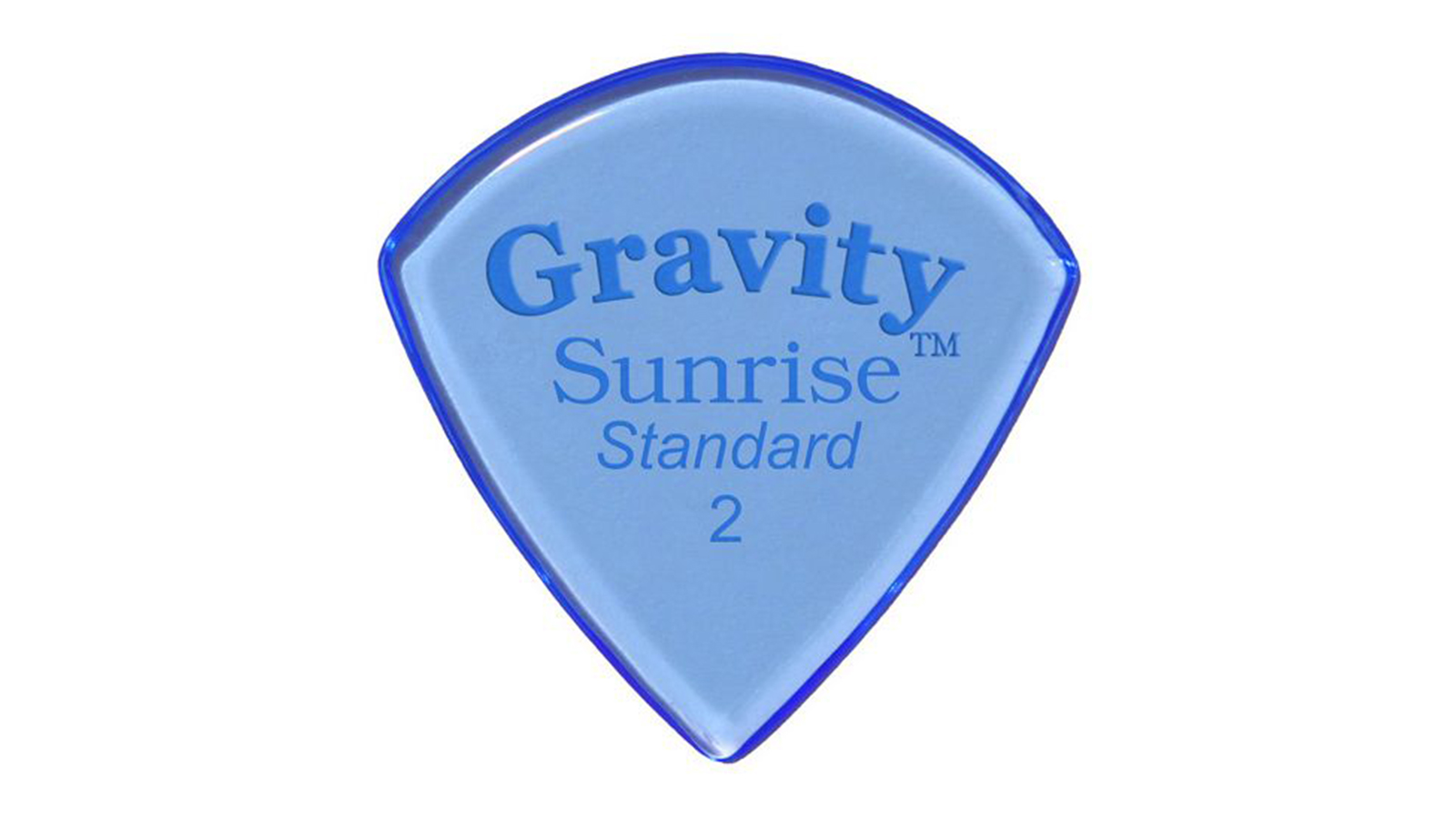
9. Gravity Sunrise Standard
Our expert review:
Specifications
Reasons to buy
Reasons to avoid
✅ Buy if you want a pick with the best longevity: Acrylic lasts an incredibly long time, so if you’re fed up with pick-wear, try the Gravity out for size.
❌ Avoid if you have a habit of losing plectrums: Being handmade, Gravity picks carry a premium price tag and will not be cost-effective if your plectrums go missing often.
Overview: Gravity is a small company from California that has been making waves in the guitar world. I first came across them through their collaboration with JHS Pedals, and the Sunrise Standard is their take on the legendary Jazz III.
Build quality: With its accurate pointed tip and glossy acrylic construction, the Sunrise Standard offers superb fluidity between the strings. The acrylic is highly durable, so it does not wear down easily, and it provides a crisp, articulate attack.
Usability: Each Gravity pick is shaped and polished by hand, and that attention to detail is clear from the very first strum. The beveled edges are consistent and smooth, allowing the pick to glide across the strings while still feeling surprisingly grippy. Of course, this level of craftsmanship comes at a price, and I would not want to lose one of these down the back of the couch.
Sound: The Sunrise Standard is the only pick in this guide made from Polymethyl Metacrylate, a tough and resonant material that translates into a bright, snappy tone. It may not appeal if you prefer warmth, but if you want immediacy, clarity, and bite, this pick will not let you down.
How to choose

If you are new to playing guitar and don’t know where to start, I have put together this section so you know what to consider when purchasing your next plectrum. I have called on my experience as a player for over 20 years, and my approach when customers ask me a similar question when they come into the guitar store I work in. Let’s take a look.
1. Thickness
You can trust Guitar Player.
The first thing to think about is the picks’ thickness. If you are a beginner and do not know what to go for, I usually recommend starting around 0.60 mm. This sits on the thinner side, but not so thin that it flops around, making it a great place to begin.
Some players do prefer starting with a thicker pick, as the extra material can be easier to grip, so there is no harm in experimenting. Ultimately, finding the right gauge comes down to a bit of trial and error, but beginning around this point will put you on the right path.
2. Shape
The most common shape you will see is the standard 351, which is the classic teardrop design. I find this to be the most versatile shape, and it is what many players start with. Jazz-style picks, on the other hand, are much smaller and have a sharper tip, making them popular for fast and precise playing. If you are just starting out, I would recommend trying a standard shape first, as it works across almost every style and genre.
3. Material
Different materials can change both the feel and the sound of your playing. Celluloid, for example, is one of the oldest and gives you a balanced, slightly bright tone. Nylon is smooth and a little warmer, while Delrin and Ultex are stiffer and more durable, often producing a brighter, more snappy attack. I always tell players that materials are worth experimenting with, as you may be surprised how much they influence your tone.
4. Grip
Keeping hold of your pick is more important than most beginners realise. Some picks come with embossed logos or textured finishes that make them easier to grip, while others are completely smooth. In my experience, beginners often find textured grips more reassuring, as they stop the pick slipping out of their fingers mid-song.
5. Playing style
Finally, think about what you want to play. If you are mostly strumming chords on an acoustic, a thinner pick will give you a smooth, fluid sound. If you are learning lead guitar or heavier styles, a thicker pick will give you more control and precision. For players who switch between acoustic and electric, a medium pick around 0.70–0.88 mm often strikes the right balance.
FAQs
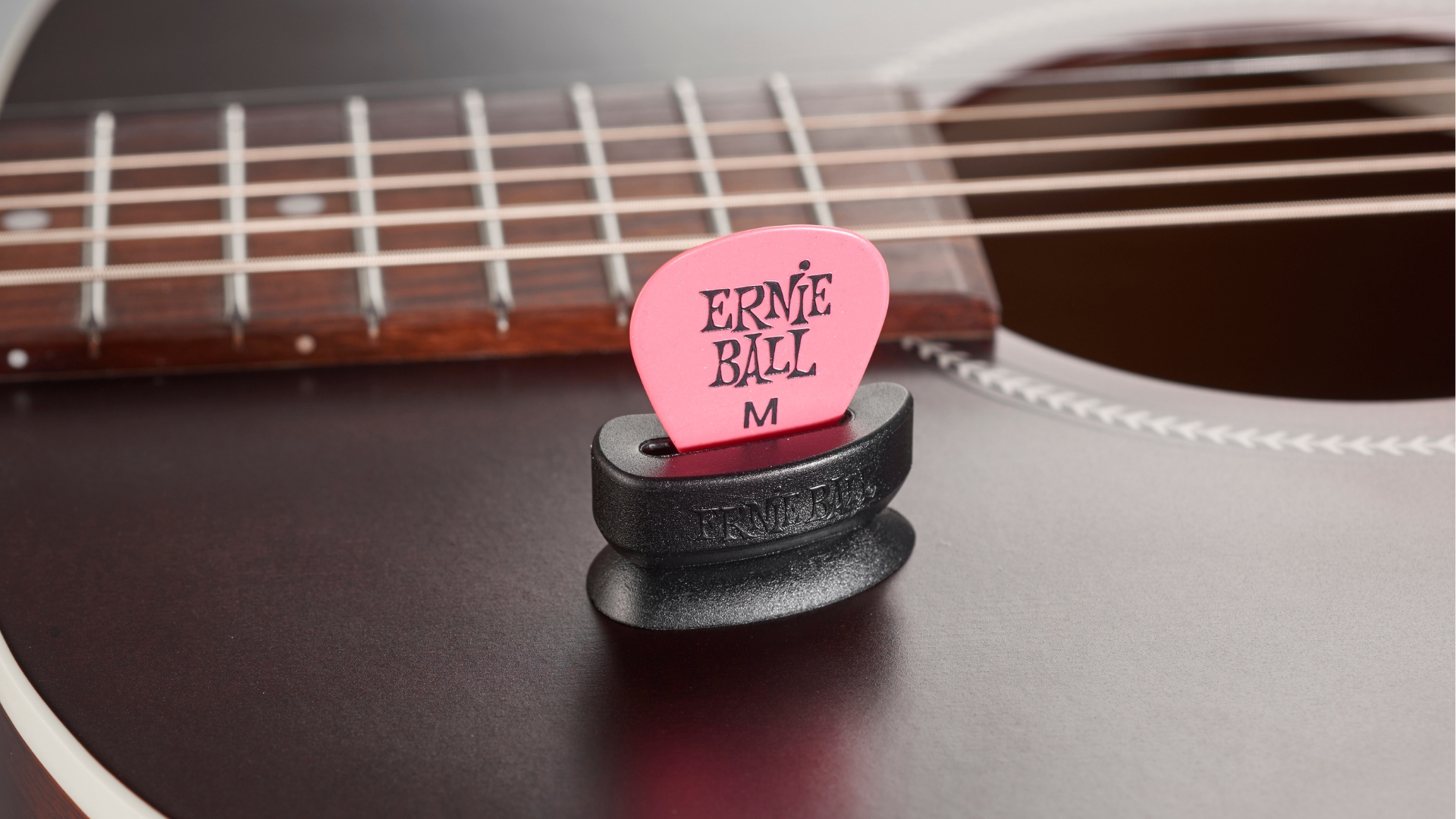
What pick thickness should I use?
The thickness, or gauge, of a pick is largely down to personal preference, but there are some general things worth considering. A thicker, more rigid pick tends to offer greater control and works well for lead lines, fast passages, and intricate playing. Some acoustic players also enjoy the feel of a thicker pick, though it usually brings a brighter, more prominent attack. If you prefer a warmer, rounder tone on acoustic, a thick pick might not be the best match.
A thinner, more flexible pick has more give when strumming, and if you keep your technique fluid it can create a smooth, natural sound. The downside is that if you go too thin, you may hear more pick noise, with a slapping effect across the strings if your attack is inconsistent.
In the end, it depends on your style, tonal goals, and what feels most comfortable in your hand.
Does pick material make a difference in tone?
Yes! A common oversight is overlooking the effect a pick’s material has on the tone. There are many more materials on the market nowadays compared with the ‘50s and ‘60s, meaning more consideration is required. Below, we have covered the main materials you are likely to come across. It is also worth noting these are generalisations – some players will have a naturally brighter or warmer sound due to the way they play and where they strike the string.
- Delrin: Delrin picks tend to give a fairly bright tone and a strong attack. It depends on the gauge, but they tend to sit on the more rigid side, compared with nylon, and offer great articulation.
- Nylon: Nylon picks will usually yield a slightly warmer tone with a moderate attack. When used in a certain way, you almost get a little compression while digging into the notes.
- Ultex: Ultex picks are usually very stiff and rigid, which leads to a bright and snappy tone. Even thinner gauge Ultex picks can feel thicker than they actually are.
- Celluloid & casein: Celluloid picks became more popular after the ban of tortoiseshell in the 1970s and they aim to replicate the warmth these picks produce. They are fairly smooth, so there isn’t much to grip onto, but many players use them without dropping them. Casein picks get even closer to the sound and feel of tortoiseshell.
What is the difference between standard and jazz picks?
In my experience, the main difference comes down to the tips. Standard picks were around first, and their tips are generally more rounded. I have always found them to be the most versatile choice, and if you are covering a wide range of styles and genres, a standard, rounded tip is usually the safest bet.
Jazz picks, on the other hand, were introduced by Jim Dunlop in 1976. Their tips are much sharper and more pointed, which gives you far greater precision and speed compared with a rounded design. I tend to think of them as more specific to fast, accurate playing, but plenty of players use them for strumming as well.
Are expensive picks worth it?
When players have asked me this in the store, my answer has usually depended on their experience level. If you are fairly experienced and have already tried different plectrums, then yes, expensive picks can absolutely be worth the money. On the other hand, if you are a beginner, you are unlikely to notice the benefits of a high-end pick straight away.
Take the Gravity Sunrise Standard as an example. These hand-finished Polymethyl Metacrylate plectrums feel fantastic, last for years, and are incredibly comfortable to play with. To me, they are well worth the investment. But if you are just starting out, it is probably not the best use of your budget, since you will not have much to compare it against.
Should I use different picks for electric and acoustic guitar?
In my experience, if you are using a fairly universal pick like the Fender Wavelength 351, and your playing style does not change much between electric and acoustic, then one plectrum will do the job. I only recommend using different picks if your styles are very distinct.
For example, I often reach for a Jazz III when I want precise, intricate lead lines on electric, but I will switch to something like the D’Addario Casein Wide 346 when I want a softer, more natural strum on acoustic. That way I get the best of both worlds. If your approach to both instruments is fairly similar, however, you will be perfectly fine sticking with the same pick.
Can you make your own guitar picks?
Yes, you can make your own guitar picks, and many players have tried it at some stage. Old bank cards or ID cards are the most common starting point, and there are even tools you can buy to punch them into shape. But take it from me, they are rarely the most comfortable. Grip is almost non-existent, and the edges can be sharp enough to catch on your strings. If you are the least fussy player in the world, you can get by, but it is far from the best experience.
How do you make a guitar pick more grippy?
There are a few different methods to try and add a bit of grip to your pick. I have seen people punch holes into the middle of the plectrum, although this can be quite tricky to do. A popular option is to take a fine-grit of sandpaper and sand the surface of the pick to provide a matted form of grip. I have also seen players scratch indentations into the surface to provide more grip. These are all tried and tested methods if you are struggling with keeping a hold of your pick.
Key terms
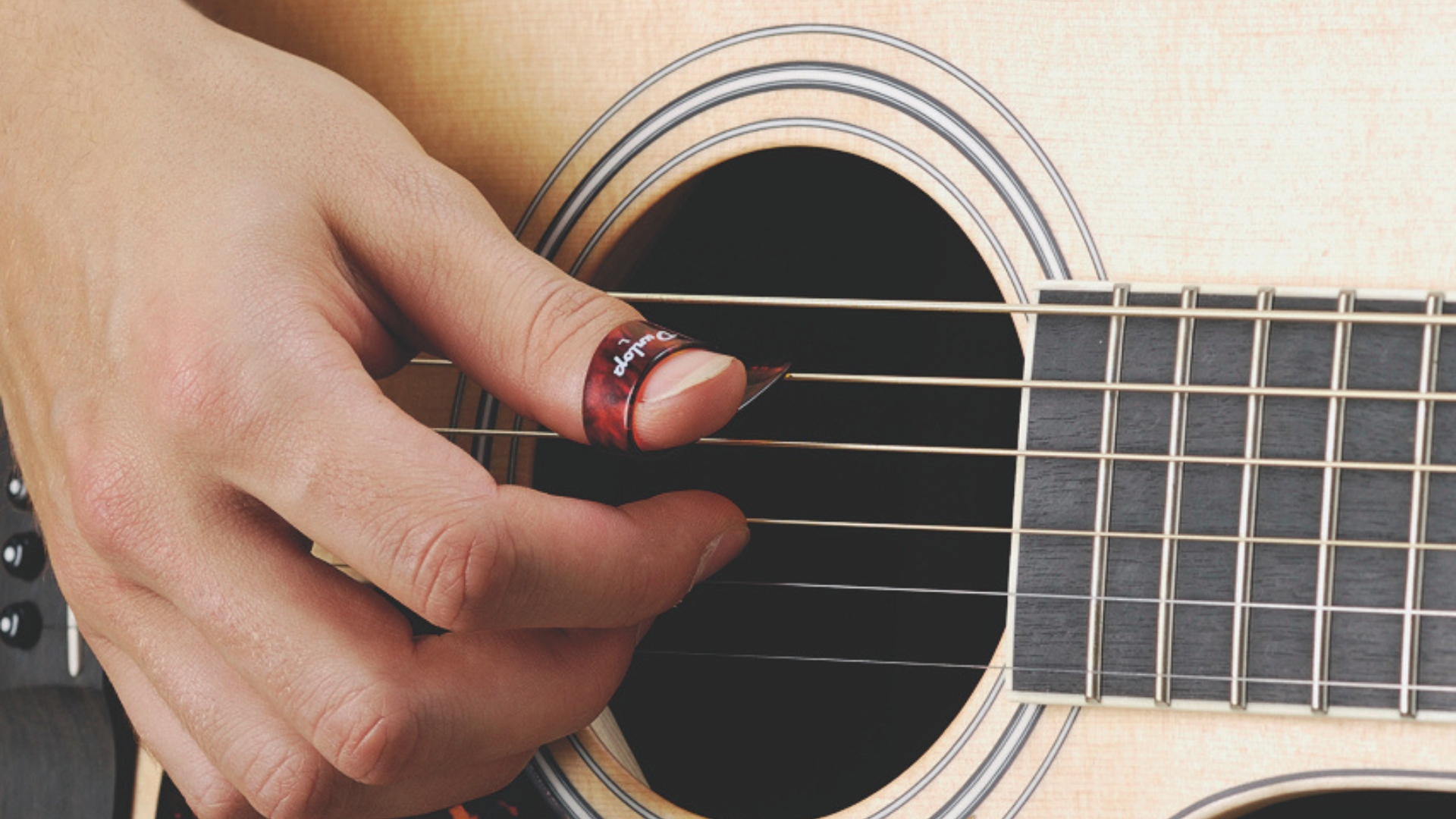
- Acrylic: This is a type of plastic used to create strong, durable, and often glossy guitar plectrums.
- Attack: This is the sound created when the pick strikes the string, based on how rigid it is.
- Beveled edge: A beveled edge is when the sides of a pick are rounded off. This helps the pick glide more smoothly across the strings and reduces drag as you play.
- Boutique picks: This is a pick created and produced by a smaller company, sometimes on a limited run.
- Chirping: A high-pitched sound you sometimes hear when the pick drags against the string. Thinner or sharper picks can make this more noticeable.
- Clickiness: The percussive “click” a pick can make as it strikes the strings. Heavier, stiffer picks tend to sound clickier, especially on acoustic guitar.
- Delrin: This is a durable plastic material popularly used to create plectrums. Delrin produces a bright, snappy attack and is very durable.
- Gauge: The thickness of a pick, usually measured in millimetres. Thinner gauges (around 0.50 mm) are flexible and good for strumming, while thicker gauges (1.0 mm and above) are stiffer and offer more control for lead playing, or for bassists.
- Jazz pick: A small, sharply pointed style of pick first popularised by Dunlop in the 1970s. Jazz picks allow for fast, precise playing but can feel less forgiving for strumming.
- Nylon: A common material for guitar picks that is slightly softer and more flexible than Delrin. Nylon often produces a warmer tone, is comfortable to grip and has more flex.
- Plectrum: The formal name for a guitar pick. Both words mean the same thing, though “pick” is used more often by players today.
- Stubby: A range of thicker Dunlop picks, usually with a sharp tip and raised grip. They are popular with players who want precision and a solid feel.
- Tortex: Dunlop’s brand of Delrin picks, instantly recognisable by their color-coding. Tortex picks are known for their durability, bright tone, and grippy matte finish.
- Ultex: A strong, translucent material used by brands that combines stiffness with durability. Ultex picks have a bright, articulate sound and a fast, snappy attack.
How we test
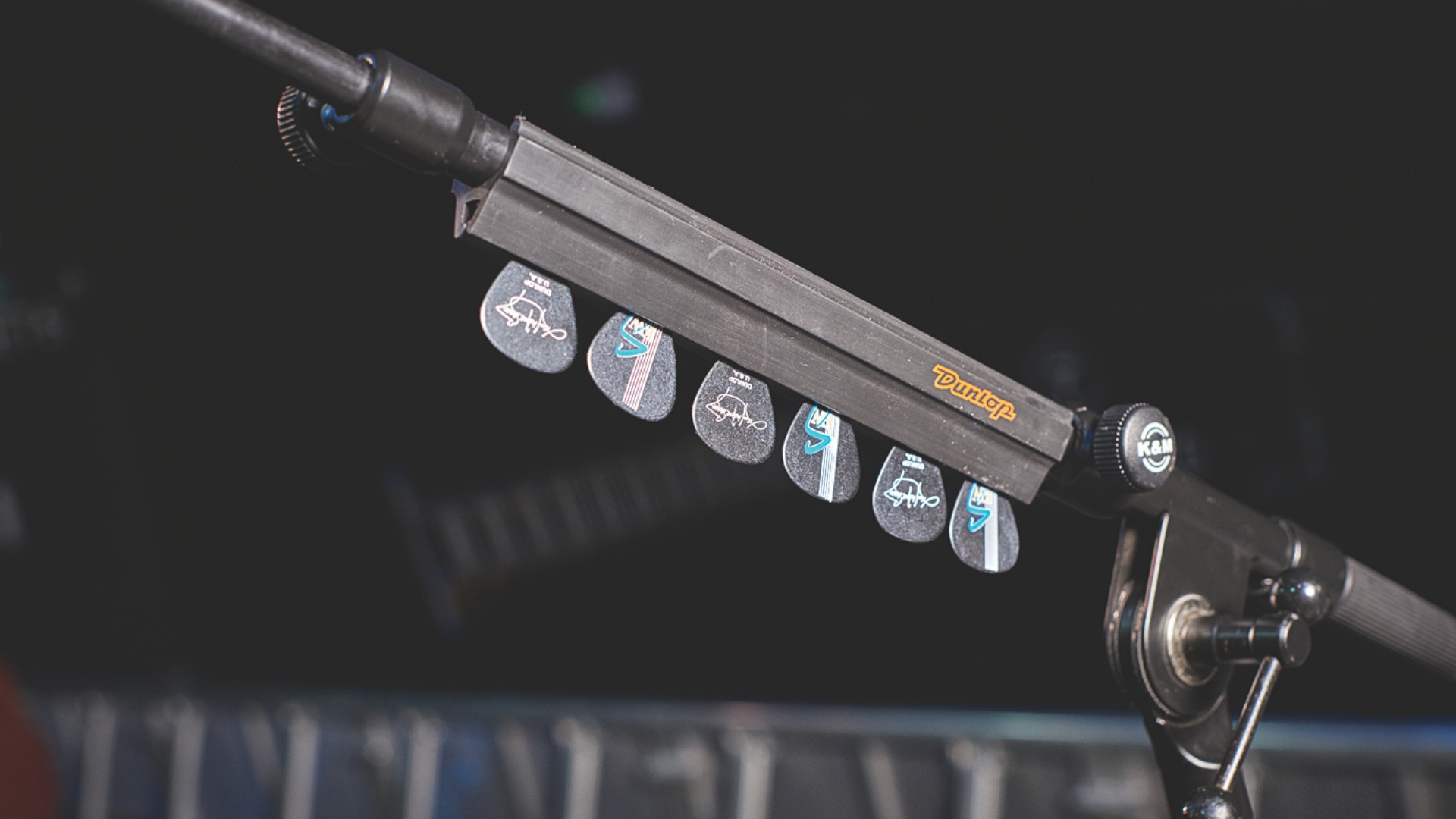
Guitar picks are an underutilized part of the guitarist's arsenal, and here at Guitar Player, we have been helping guitarists find the right tools for more than fifty years, and could probably fill an Olympic swimming pool with the number of picks our reviewers have tested. With that combined experience, it's fair to say we know what we're talking about when it comes to plectrums.
Of course, the humble plectrum is a very personal thing, and there's no 'right' option for every player out there. We keep this in mind when we're testing for our guides, ensuring that we maintain a balanced approach that takes into account all the various scenarios a pick might encounter in its playing life.
The first thing we look at when testing a new guitar pick is the build quality. Not necessarily to see how durable it is, but to look at the shape, thickness, and material that the pick is made out of. This gives a lot of insight into its intended use, and better knowledge of how the pick will perform.
Next, we use the guitar pick on a variety of guitar types, trying out different genres of playing, and generally abusing it to see how well it puts up with hard playing. We're looking to see how it reacts with strumming versus single note playing, techniques like sweep picking or hybrid picking, and we'll even do things like tapping with it to see how it performs.
We'll try and test a pick for at least a couple of weeks too, so we can get a feel for the durability of repeated playing as some materials last longer than others. This also allows us to get more comfortable with the feel, as some picks can feel quite alien initially.
Finally, we'll listen to the sound of the pick, and compare it to picks composed of other materials. We're looking to discern the attack of the pick on the string in particular, whether it imparts warmth or brightness to your tone, and listening for any clickiness or chirping that could be detrimental in a recording scenario.
Read more on how we test gear here at Guitar Player.
Read more:
- Best guitar cables: Hard-working cables that'll preserve your tone
- The best guitar capos for acoustic and electric guitar
- Discover the best guitar tuners: Clip-on, pedal and app-based options
- Here's our pick of the best guitar slides: Dunlop, Fender and more
- The best guitar straps for electric, acoustic and bass guitars
All the latest guitar news, interviews, lessons, reviews, deals and more, direct to your inbox!
After spending a decade in music retail, I’m now a freelance writer for Guitar Player, Guitar World, MusicRadar and Reverb, specializing in electric and acoustic guitars bass, and almost anything else you can make a tune with. When my head’s not buried in the best of modern and vintage gear, I run a small company helping musicians with songwriting, production and performance, and I play bass in an alt-rock band.
- Ross Holder
- Matt McCrackenJunior Deals Writer

